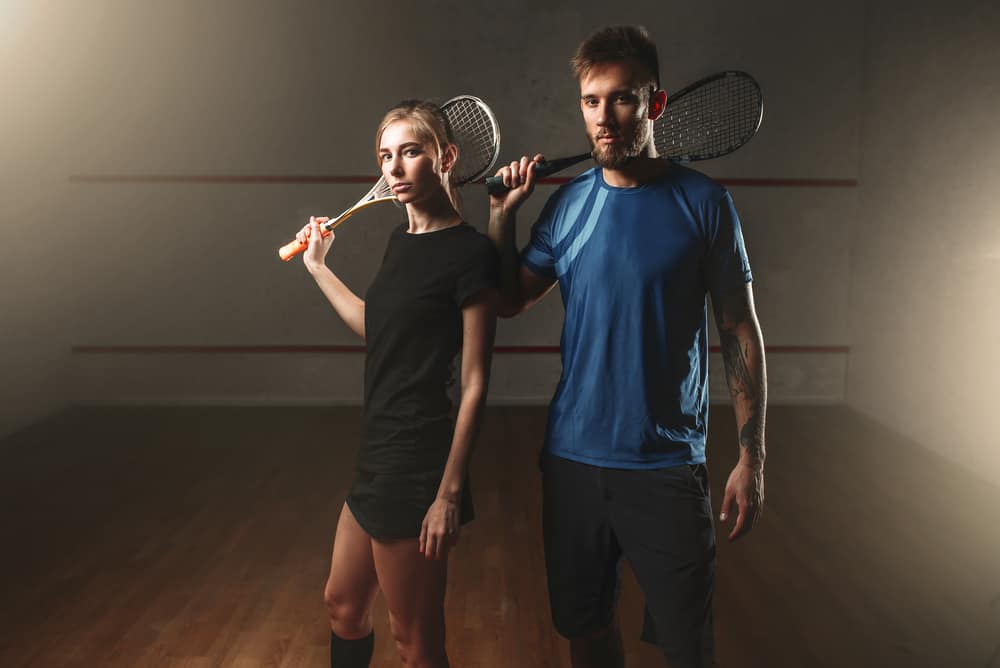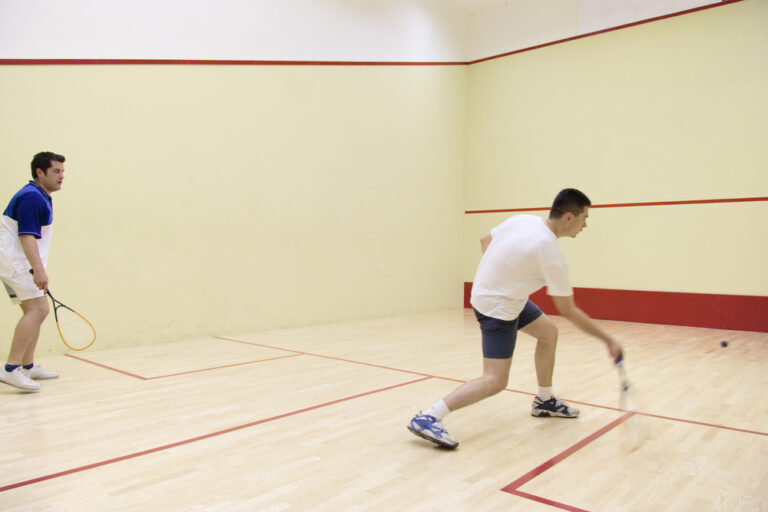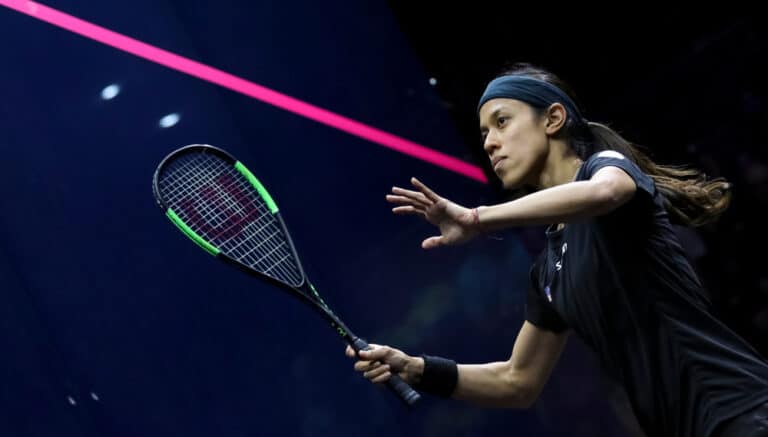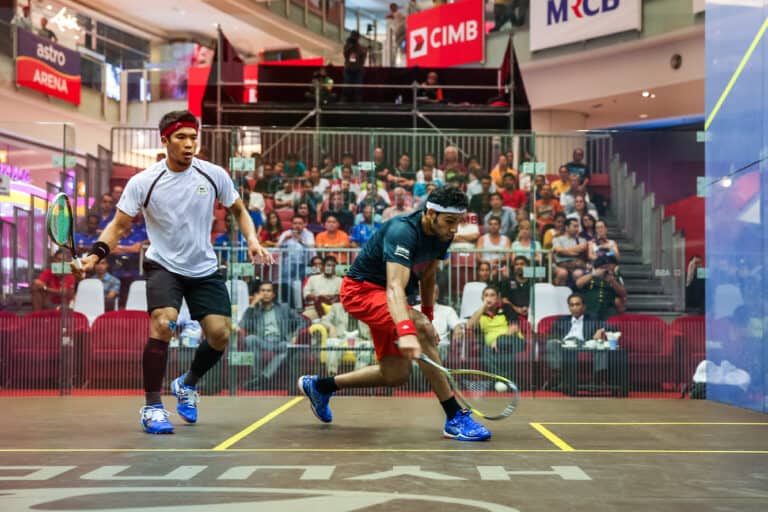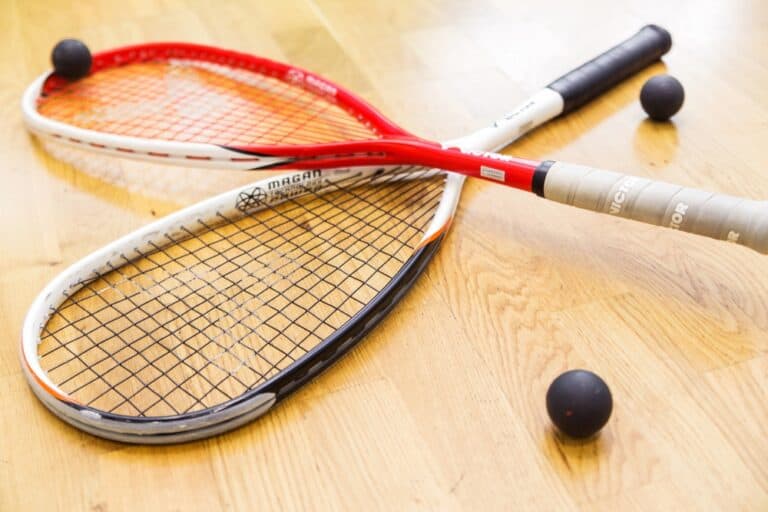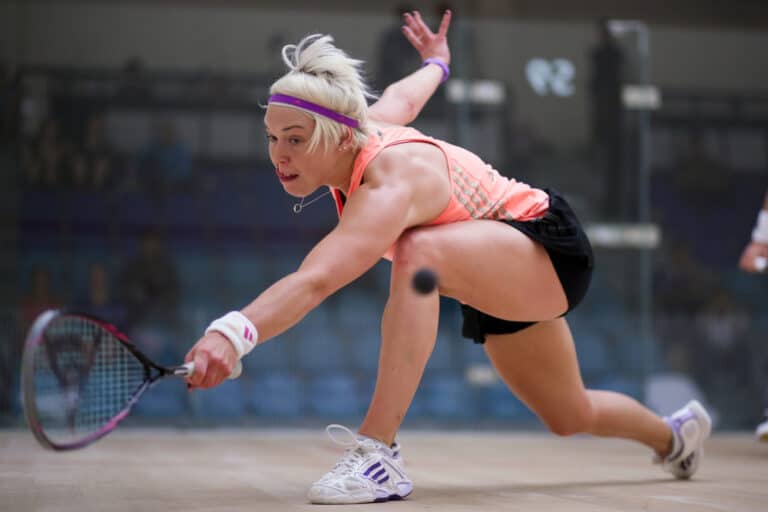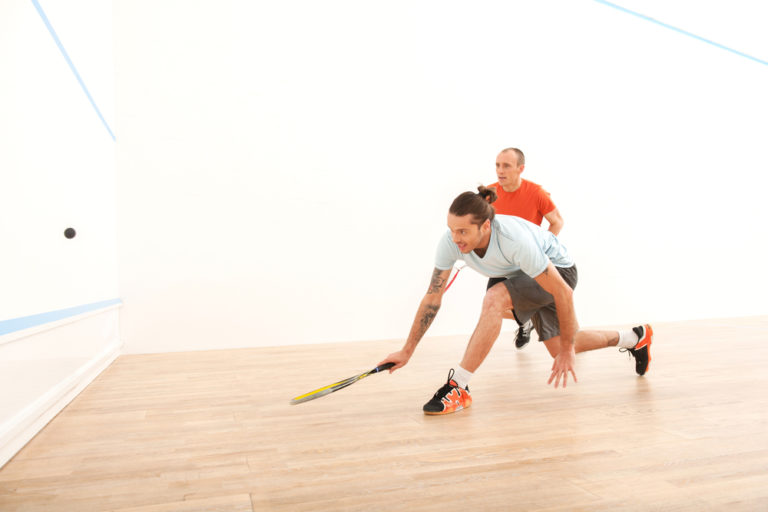What Do You Wear To Squash?
Squeezing in a good game or two of squash after a busy day at the office is always a great idea. And if you’re headed straight to the squash court straight from a stressful meeting, the good news is that you don’t need an oversized gym bag to cram in your squash gear necessary for a comfortable game.
The standard equipment needed to play squash is simple. A good quality squash racket, balls, a pair of non-marking shoes, and loose, comfortable sports clothing are all it takes to enjoy a rewarding session on the squash court. Some clubs and sporting bodies may also mandate the wearing of eyewear.
As is the case with most racket sports such as badminton and tennis, it is not necessary to invest a fortune in an overpriced kit to enjoy a nice game of squash. Use this helpful set of tips to help you choose the right gear and get the most from your game.
Squash Clothing: A Brief History
Squash has a history of over 150 years in the making. In its nascent days, this game was played in “polite” upper-class English society, primarily in private schools, colleges, and exclusive private gentlemen’s clubs.
First recorded at the Harrow School in England in the 1860s, squash was typically played by first-year college students who knocked punctured rubber balls off courtyard walls and did not yet have the skills or seniority to play.
Rackets were the preferred pastime back then. In 1864, the school built its first four outside courts.
Spreading to the US in 1884, squash was introduced at a private boarding school in New Hampshire, St Paul’s, and eventually made its way to Harvard, with two courts constructed there in 1908.
As an east coast favorite, squash quickly gained momentum in Philadelphia, Boston, and New York. Gaining further popularity, it quickly caught on, spreading both westward and southward.
Sketches and photographic archives show an evolutionary change in the styles and fashions through the decades.
From its introduction when women wore lace-up corsets, feminine slippers, court-length skirts, and even the occasional strategically placed fur, to the neon spandex and sweat-wicking polyester stretch wear of today, squash clothing has come a long way.
Squash Kit: The Clothing
It’s not going to take a professional coach or a sports scientist to convince you that of paramount importance for any sport, including a racket sport like squash, are the clothes you wear on the court.
Thankfully the days of uniform whites are long gone. These days there is a myriad of colors and styles to choose from. The most important consideration is comfort. There’s no good reason to wear any item of clothing that chafes or cuts into your skin.
The inevitable sores and blisters will leave you in recovery for a while. The negative experience will fill you with bad memories and resentment when invited to the next squash session.
If you’re just a beginner and have just decided to try your luck at squash, there’s no point in investing in an expensive kit. You can quite happily manage a beginner’s foray into the squash with a basic t-shirt, shorts or skirt, sports socks, and trainers.
Once you have decided that squash is your game and wish to continue playing, you can look at more expensive, sweat absorbing, stretch apparel.
The great thing about squash clothes is that they are relatively cheap and versatile in terms of choice compared to most sporting disciplines and even other racket sports.
Branded clothing items for specific sportswear are all the rage, and advertising for these expensive labels is everywhere.
Some of them are of much better quality than their cheaper counterparts but don’t get fooled; they are often not. They are often cheap knockoffs, too, made in sweatshops somewhere and marketed as authentic originals.
Materials used in good quality sweat-wicking squash gear include polyester, polypropylene, Merino wool, traditional wool, nylon, and Micro modal, which is a rayon fabric similar to or a combination of silk and linen.
Some great brands of squash clothing include Adidas, Head, Nike, Asics, Wilson, Slazenger, and Under Armour. Look out for specials as advertised and get the right apparel that makes you comfortable and feels confident on the court.
Remember, though, plenty of reasonably priced items are available from sports retailers. Take your time and shop around.
Squash Kit: The Shoes
The shoes required for squash are so important that they deserve special mention. Before purchasing any squash shoes, the first issue is that most courts require a player to wear shoes with non-marking soles. These shoes are usually made from light-colored, high-grade rubber.
Squash is a high-intensity racket sport requiring high impact, constant jerking movements. With all the twisting, swiveling, and dragging of your feet across the court, it’s critical to wear good quality, comfortable shoes while in play.
Decent quality squash shoes need to react specifically with the type of floor you are playing on. They are primarily designed for lateral movement too. In other words, they have support on both the inner and outer parts of the foot to facilitate quick back and forth and sideways movements.
If you cannot find a suitable pair of squash shoes, try opting for volleyball, handball, or badminton shoes. These types of shoes are generally all suitable for use on a squash court as well.
Badminton shoes tend to be lighter than squash shoes. Whether accidental or by design, they are probably the best alternative option.
Shoes that are generally not suitable for use on a squash court are basketball, CrossFit, or tennis shoes.
They do not support the same kind of movement required and are not suited for indoor courts.
Players often think that due to the similarities in the type of sport, tennis shoes are the closest alternative. This is not the case.
Tennis shoes are designed to provide superior stability and grip on outside courts made mostly of clay or grass surfaces. The compounds used to make the rubber soles are not developed with non-marking qualities in mind and are therefore a poor choice for use on squash courts.
Running shoes are another type that must never be used on squash courts. For starters, running shoes are raised at the back as added padding to protect a runner’s heels from the pounding effect of a road or track.
This is a risk for a squash player as the sudden twisting turns required in squash could raise the chances of spraining your ankle and falling, resulting in injury.
The second disadvantage of running shoes is that they possess no lateral support. This means that they are not designed for any twisting or quick turning motion.
Modern running shoes are designed to be as lightweight as possible. They are therefore often made from a thin canvas vamp or topline, which is too weak to provide adequate foot support and protection.
When purchasing squash shoes, try to ignore the price and brand as much as your budget allows. The most important factor is that they are comfortable, fit your foot shape as perfectly as possible and provide the necessary support.
If you are serious about squash and play often enough, consider purchasing two pairs of shoes. For one, they will last longer if you alternate them, and secondly, you will also always have a pair handy if one of them breaks or is drying after being in the wash.
Protective Eyeware For Squash
Many squash players think wearing protective eyewear or goggles is unnecessary and an inconvenience, and it is therefore not something you see all that often. It is true that eyewear tends to fog up from all the sweat and body heat. It does require constant wiping and cleaning of the glasses.
Wearing safety goggles or glasses can also limit your vision during play and therefore hinder your game. Having said that, the risk of an injury to your eyes in squash is significant, according to many ophthalmologists and the American Optometric Association.
There are countless examples of this. Jonathan Power was on course to win his second Open World Title in 2002 against David Palmer.
In the semifinal’s second game, he took a hit to the eye from Palmer’s racket ending his game and forcing him to go into recovery for several weeks. Luckily, he didn’t suffer any permanent eye damage.
Former US champion Will Carlin got struck in the eye by a lightning-fast ball, causing him significant pain and suffering from a torn and detached retina.
He had to endure two eye surgeries setting him back $50K in medical expenses and months of extreme pain, anxiety, and nausea and affecting his professional career.
It is critically important to wear eye protection if you use spectacles or contact lenses for normal vision. The added risk of not wearing goggles is increased tenfold, and you could end up with a penetrative injury and risk losing an eye if you are struck in the eye hard enough to cause the glasses to break or splinter.
Many tournaments mandate competitors to wear eye protection. Players won’t be allowed on the court without any eyewear. It should be legislated, and professional players should set an example for others to follow when it comes to eye safety on the court.
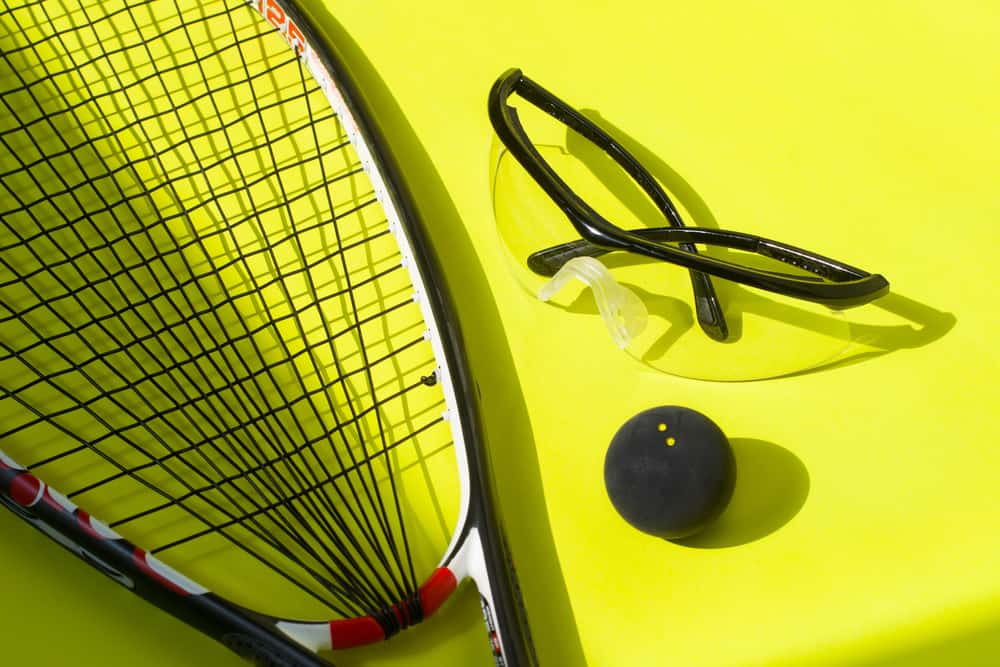
Optional Squash Accessories
To wear or not to wear. That question is best answered by yourself. Many seasoned squash players will drone on for hours about which racket and balls are best, what/ what not to wear on the court, and which accessories you cannot do without. Do your own research and make an informed decision.
Squash wristbands and headbands: – squash is a high-intensity game, and sweating is inevitable. Wrist and headbands are a must if you intend to have a good game and keep your face dry.
Towels and water bottles:- you will need a small hand towel to wipe your hands, face occasionally, and racket. All that sweat must be replaced. Keep hydrated with a water bottle.
Overgrips and replacement grips:- your racket comes stock standard with a factory-fitted grip. To aid sweat absorption and to aid grip and comfort for oversized hands, make the grips bigger by wrapping an additional overgrip or swapping it out entirely with a replacement grip.
Squash supports:- Wrist straps are used extensively in a multitude of sports, including racket sports. They are an excellent option if you suffer from weak wrists or simply want to benefit from added support. Choose ones made from good quality material such as nylon for increased durability and longevity. Options include heavy-duty wrist straps with loops for extra thumb support.
Knee and elbow sleeves:- Outer elbow pain is common in racket sports. Called “tennis elbow,” it can be prevented by adequate stretching and warmup and by using elbow straps or sleeves that help prevent it and assist in a faster recovery. Do not compromise on good quality when it comes to support. Tendonitis can take weeks to heal. Look for ones made from superior quality material, such as anti-slip silicone.
Squash racket dampener:- Squash racket dampeners are designed to reduce vibrations when you strike the ball. Available in different colors and designs, these devices don’t do much more than dampen the “ping” sound the racket makes when hitting the ball. It’s more a mental than a physical factor.
Insoles and heel pads:- Sports insoles and heel pads reduce stress on the feet while exercising. The twisting and turning required in an active game of squash put enormous pressure on the feet. These gadgets are vital if you want to reduce blisters and bruises from forming on your feet. They can be removed quite easily to be washed as often as needed.
Conclusion
To play a simple game of squash, you don’t need anything fancy or expensive. Before investing in some more expensive gear, grab yourself a simple t-shirt, shorts or skirt, a pair of good quality trainers, and your racket and balls. Now put away your laptop PC, grab your kit bag, and head for the door.
References
- https://www.reddit.com/r/squash/comments/89tr2f/what_squash_kit_do_you_wear/
- https://www.harpersbazaar.com/fashion/trends/g37408593/best-workout-clothes-according-to-experts/
- https://www.realbuzz.com/articles-interests/sports-activities/article/squash-gear-for-beginners/
- https://www.youtube.com/watch?v=5NBErRs5A_Y
- https://www.sportsdirect.com/squash/squash-clothing
- https://www.amazon.com/Mava-Sports-Compression-Sleeves-Support/dp/B086D7MQGZ
- https://www.worldsquash.org/a-sport-with-history/
- https://en.wikipedia.org/wiki/Squash_(sport)

